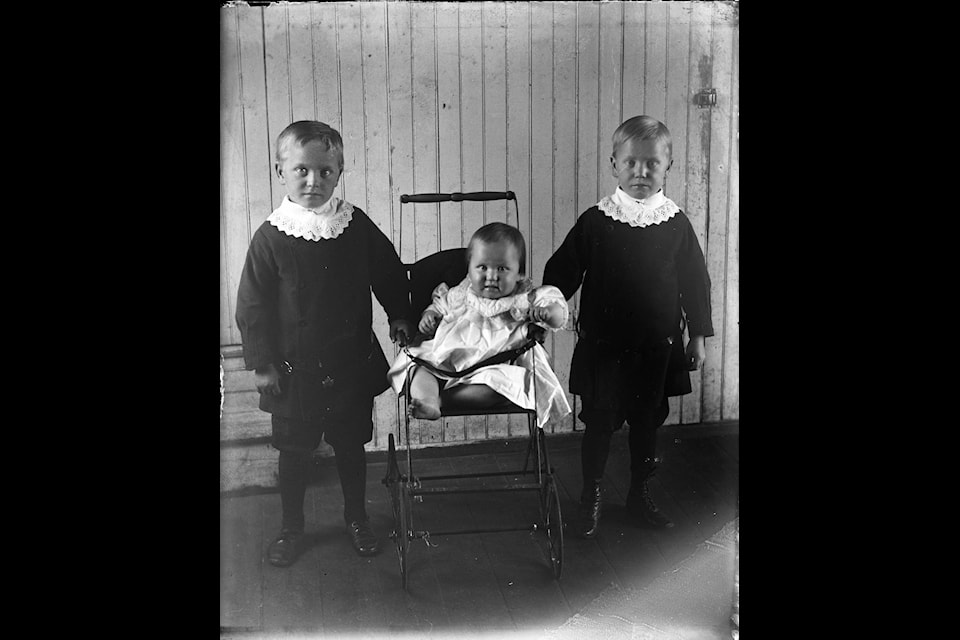The merits of Central Alberta were obvious to aboriginal people for thousands of years.
It was not until the relatively recent past that the first European immigrants arrived and began to leave their imprint on the area.
“A lot of it was shaped by what was known as the Saskatchewan Land and Homestead Company,” said Red Deer City Archivist Michael Dawe.
“It bought 115,000 acres of land in and around Red Deer so that had a really major impact on who settled here.”
That company, which was started up in the 1880s, had Methodist Church roots and not surprisingly used their network to encourage other Methodists, from Ontario and the Maritimes, and as far as Great Britain and the U.S.
Rev. Leonard Gaetz, was both a Methodist and the local agent for the land company.
In the 1890s, you started seeing large numbers of Scandinavian settlers coming into this area, mainly settling west of Red Deer. Sylvan Lake became home to a number of Finnish families, and Estonians among others were also drawn here.
Many had first settled in the U.S. before moving to, what they hoped, were better prospects further north.
Beginning around 1897, a cold, dry spell that had plagued agriculture eased. As well, the Klondike Gold Rush led to general economic improvement.
In Central Alberta, the growth of mining in the Kootenays created ready markets for grain and other products, which fed the local economy.
The Great West Lumber Company and the Roman Catholic mission on the North Hill attracted a significant number of French-speaking immigrants. Scandinavians were also attracted by the lumber jobs.
“People ask why do people come here? Well, they come because there are jobs,” said Dawe.
Immigration stalled during the First World War, but then picked up in the years after when many moved here from the British Isles, where social unrest and hard economic times led the government to encourage emigration.
“One of the big schemes was to bring Scottish Hebrideans, first to Red Deer and then from Red Deer they disbursed.”
Gaelic speaking, the Hebrideans found enough local people who knew their language to get by, but it wasn’t easy for the new arrivals.
“The big disadvantage for the Hebrideans is they weren’t farmers, they were largely fishing people.”
Immigration slowed to a trickle during the Great Depression and the Second World War. Following the war, many Dutch people sought out a new home in Canada, a nation they credited with liberating them.
Many were skilled farmers and dairy producers and Central Alberta county maps are still full of Dutch names.
“We had a very large influx of Dutch-Canadians to Red Deer and Lacombe and places like that,” he says.
“Post World War 2, the economy was bad in Britain so a lot of them moved to Canada, where they hoped prospects would be better” he said. There was a noticeable influx in residents from the British Isles in that period.
Strife also led to a number of other waves of immigration that had an impact in Central Alberta. The Hungarian Revolution in 1956 saw some make their way here and unrest in South America around the 1960s and 1970s saw many look to Canada.
The Vietnam War also led thousands of the so-called “Boat People” to make their way to Canada and Central Alberta.
Also in the 1950s and ’60s, immigration restrictions were relaxed for Asians and there was an influx from China and South Asian countries such as India and Pakistan. Now, the largest visible minority communities in Alberta are South Asian, Chinese and Filipino.
Red Deer has continued to welcome newcomers from other countries who are looking for a brighter future. Most recently, Syrian families escaping the civil war have found peace in Red Deer.
Statistics Canada’s annual census provides a snapshot of the city’s ethnic heritage.
According to the 2011 census (the ethnic breakdown numbers aren’t available yet from 2016) the most populous groups with roots in the Americas came from the U.S., El Salvador, Colombia and Mexico.
Europeans were led by the United Kingdom, Netherlands, Germany, Poland and Russia. African immigrants came mostly from South Africa and Nigeria with others spread among the many nations throughout the continent.
Those originally hailing from Asia, were led by Filipinos, Chinese, Indians and Vietnamese.
pcowley@reddeeradvocate.com
